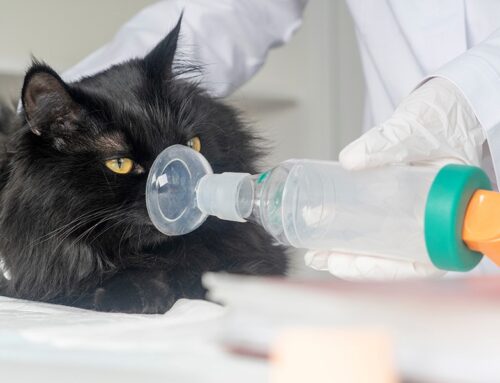Monitoring your pet’s vital signs is an essential part of ensuring their health and well-being. Heart rate, respiratory rate, and temperature are key indicators of your pet’s overall condition.
Knowing what is normal for your dog, cat, or rabbit can help you identify early signs of illness and seek veterinary care promptly.
Normal Vital Signs
Here’s a quick reference for what is considered normal in dogs, cats, and rabbits:
| Species | Heart Rate (beats per minute) |
Respiratory Rate (breaths per minute) |
Temperature (°C) |
|---|---|---|---|
| Dogs | 60–140 (depending on size/age) |
10–30 | 37.5–39.2 |
| Cats | 140–220 | 20–30 | 37.5–39.2 |
| Rabbits | 130–325 | 30–60 | 38.5–40.0 |
How to Check Vital Signs
- Heart Rate: Place your hand on your pet’s chest just behind the front leg or feel for the pulse on the inside of the thigh. Count the beats for 15 seconds and multiply by four to calculate beats per minute.
- Respiratory Rate: Watch your pet’s chest rise and fall to count breaths. Each rise and fall counts as one breath.
- Temperature: Use a digital thermometer inserted gently into the rectum. Lubricate the tip with petroleum jelly or water-based lubricant to minimize discomfort.
What Abnormal Vital Signs May Indicate
If your pet’s vital signs fall outside the normal ranges, it could indicate an underlying health issue:
- Elevated Heart Rate (Tachycardia): May be caused by stress, pain, dehydration, fever, anemia, or heart disease.
- Low Heart Rate (Bradycardia): Can indicate hypothermia, poisoning, or advanced heart disease.
- Rapid Breathing (Tachypnoea): Could signal heat stress, respiratory infection, heart failure, or pain.
- Labored or Shallow Breathing: May indicate an airway obstruction, lung disease, or fluid in the chest.
- High Temperature (Fever): Often a sign of infection, inflammation, or heatstroke.
- Low Temperature (Hypothermia): Common in shock, severe illness, or prolonged exposure to cold.
What to Do if Vital Signs Are Abnormal
- Stay Calm: Stress can further worsen your pet’s condition.
- Record the Signs: Note the exact heart rate, respiratory rate, and temperature, as well as any other symptoms like lethargy, vomiting, or changes in appetite.
- Seek Veterinary Attention: Contact Forestside Veterinary Clinic immediately for guidance. Provide the recorded vital signs to help the team assess the urgency of the situation.
- Keep Your Pet Comfortable: For fever, offer a cool environment and plenty of water. For hypothermia, provide warm blankets. Avoid administering human medications unless directed by a vet.
When to Contact Your Vet Immediately
- Dogs with a heart rate above 160 or below 60 beats per minute.
- Cats with a heart rate above 220 or below 140 beats per minute.
- Rabbits with a heart rate exceeding 325 or below 130 beats per minute.
- Respiratory distress (e.g., open-mouth breathing in cats or rabbits).
- A temperature above 40.0°C or below 37.0°C in any species.
Proactive Monitoring for a Healthy Life
Regularly monitoring your pet’s vital signs at home can provide early warning of potential health issues. If you’re ever unsure about your pet’s condition, don’t hesitate to contact us at Forestside Veterinary Clinic for advice or to schedule an exam. Together, we can help your furry or fluffy family member stay happy and healthy!



